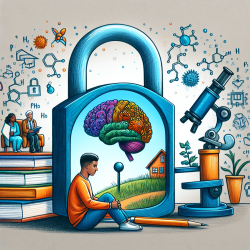Introduction
In recent years, the field of epigenetics has shed light on how early-life socioeconomic status (SES) and family adversity can leave lasting biological imprints on children. A pivotal study titled The biological embedding of early-life socioeconomic status and family adversity in children's genome-wide DNA methylation explores these associations. The research highlights how DNA methylation, a key epigenetic mechanism, can serve as a biomarker linking early-life social experiences with later-life health outcomes.
Key Findings from the Study
The study examined 178 kindergarten children from diverse socioeconomic backgrounds to understand how early-life SES and family adversity impact DNA methylation patterns. The results indicated significant associations between family income, parental education, and family psychosocial adversity with variations in DNA methylation at specific genomic sites. These variations were linked to genes involved in immune and developmental regulation functions.
Implications for Practitioners
As practitioners in the field of speech-language pathology, understanding the biological underpinnings of early-life experiences can enhance our approaches to therapy. Here are some practical implications:
- Early Identification: Recognizing children from low-SES backgrounds who may be at risk for altered DNA methylation can guide early interventions.
- Holistic Approach: Incorporating knowledge of a child's social and economic background into therapeutic practices can lead to more personalized and effective interventions.
- Collaboration: Working with other professionals, such as psychologists and social workers, to address the broader social determinants of health can improve outcomes for children.
Encouraging Further Research
The study underscores the need for further research to explore the sensitive periods of exposure and the potential for interventions to alter DNA methylation patterns. Practitioners are encouraged to stay informed about ongoing research in this area and consider participating in or supporting studies that aim to elucidate these complex relationships.
Conclusion
The research on DNA methylation and early-life socioeconomic factors provides valuable insights into how social experiences can shape biological processes. By integrating these findings into practice, speech-language pathologists can contribute to more comprehensive care that addresses both the biological and social aspects of child development.
To read the original research paper, please follow this link: The biological embedding of early-life socioeconomic status and family adversity in children's genome-wide DNA methylation.










